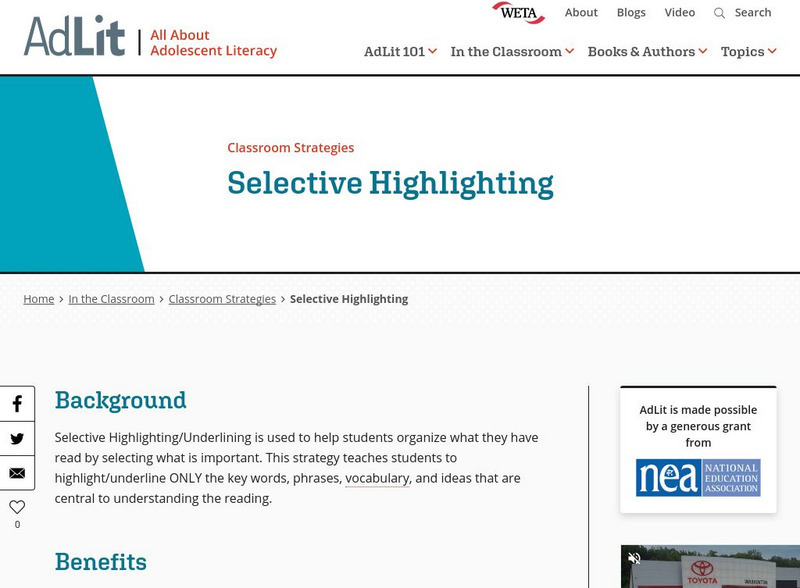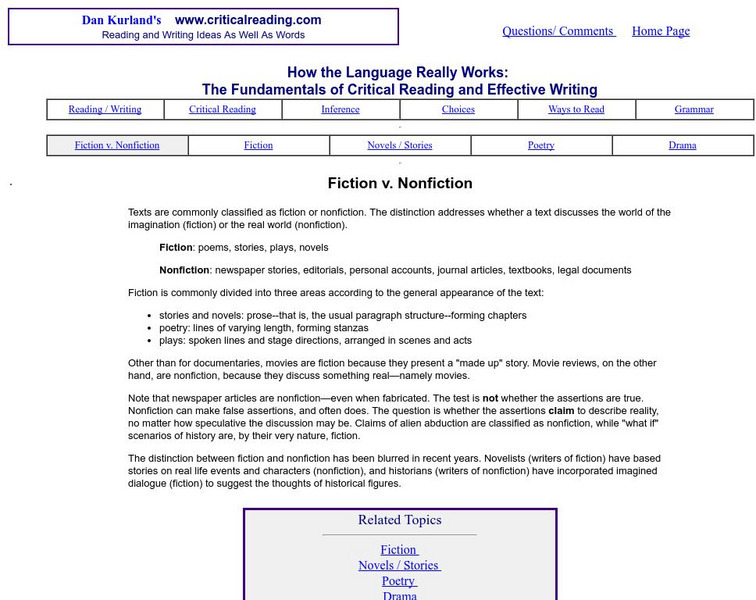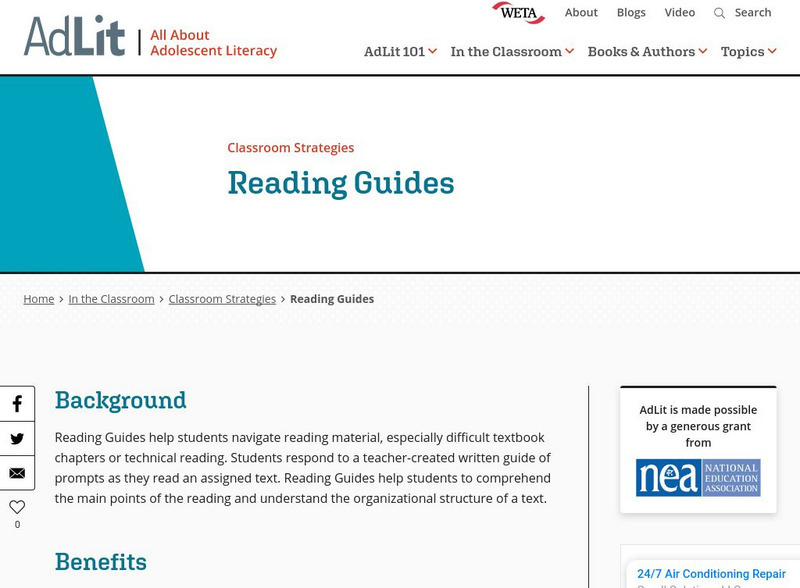Department of Defense
Do Dea: Real Survival Skills
Learn about process analysis, writing procedurals texts, the steps of the writing process, and cause and effect in this unit. Also, examine patterns of organization in writing. A handy chart shows common organizational patterns which...
Thinkport Education
Thinkport: Analyzing Data Sources and Author's Purpose: Electric Currents
In this science-themed literacy lesson, students learn how to determine the author's purpose and follow the development of that purpose.
Other
Wisewire: Grades 9 10 Playlist: Analyze How an Author Unfolds an Argument
This is an example of how to analyze how an author unfolds an argument. It provides an example and links to use for practice. RI.9-10.3 author unfolds
Other
Study.com: How to Use Descriptive Details & Sensory Language in Your Writing
When you write a narrative, you can draw your reader into your experiences by adding specific, concrete details and sensory language to your storytelling. This lesson tells you exactly how to do it. W.9-10.3d Precise/sensory details,...
Texas Education Agency
Texas Gateway: Analyze How Author's Style and Syntax Support Meaning
In this lesson, we will discuss how an author's syntax reveals meaning and makes ideas stay with the reader. Practice exercises are included.
Texas Education Agency
Texas Gateway: Reading Comprehension Across Genres: Annotate for Meaning
This lesson focuses on Annotation, a "writing-to-learn" strategy. It consists of writing explanatory notes and critical (analytical) commentary to yourself. Annotating text consists of two steps: (1) underlining, highlighting, circling,...
Alabama Learning Exchange
Alex: Do You Know How?
Students will write in a technical genre. "Technical writing conveys specific information about a technical subject to a specific audience for a specific purpose. The words and graphics of technical writing are meant to be practical:...
AdLit
Ad lit.org: Classroom Strategies: Selective Highlighting
Selective Highlighting/Underlining is used to help students organize what they have read by selecting what is important. This strategy teaches students to highlight/underline ONLY the key words, phrases, vocabulary, and ideas that are...
AdLit
Ad lit.org: Classroom Strategies: Semantic Feature Analysis
The Semantic Feature Analysis strategy engages students in reading assignments by asking them to relate selected vocabulary to key features of the text. This technique uses a matrix to help students discover how one set of things is...
AdLit
Ad lit.org: Classroom Strategies: Question the Author (Qt A)
Question the Author (QtA) is a comprehension strategy that requires students to pose queries while reading the text in order to challenge their understanding and solidify their knowledge (Beck et al., 1997).
Other
Definition: Fiction v. Nonfiction
This writing and reading tutorial provides a detailed explanation of the difference between fiction and nonfiction in rhetoric.
Fun Trivia
Fun Trivia: The Four Types of Writing Trivia Quiz
A fifteen-question quiz in which the reader identifies a type of writing for each situation: argumentation, exposition, narrative, or description. Correct answers are displayed once answers are submitted.
FNO Press
From Now On: The Research Cycle, 2000
Excellent site from From Now On for students who are assigned research papers and need to begin finding and reading material. Part of a book, the site gives information on questioning, evaluating, planning, gathering, sorting,...
AdLit
Ad lit.org: Classroom Strategies: Reading Guides
Reading Guides help students navigate reading material, especially difficult textbook chapters or technical reading. Students respond to a teacher-created written guide of prompts as they read an assigned text. Reading Guides help...
Quizlet
Quizlet: Types of Supporting Details: Definitions: Learn
This interactive helps students learn the types of supporting details by having them type in the terms that fit the definitions.
















